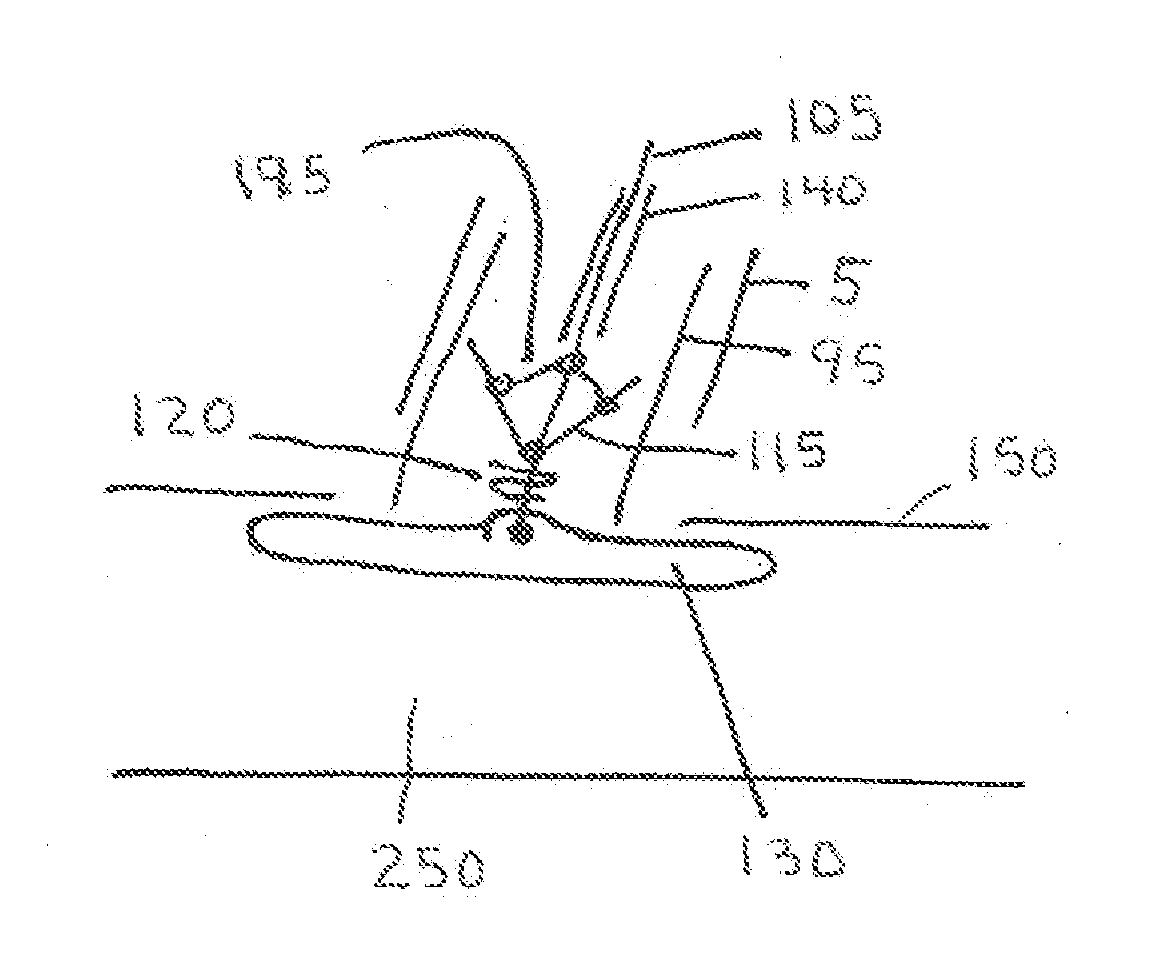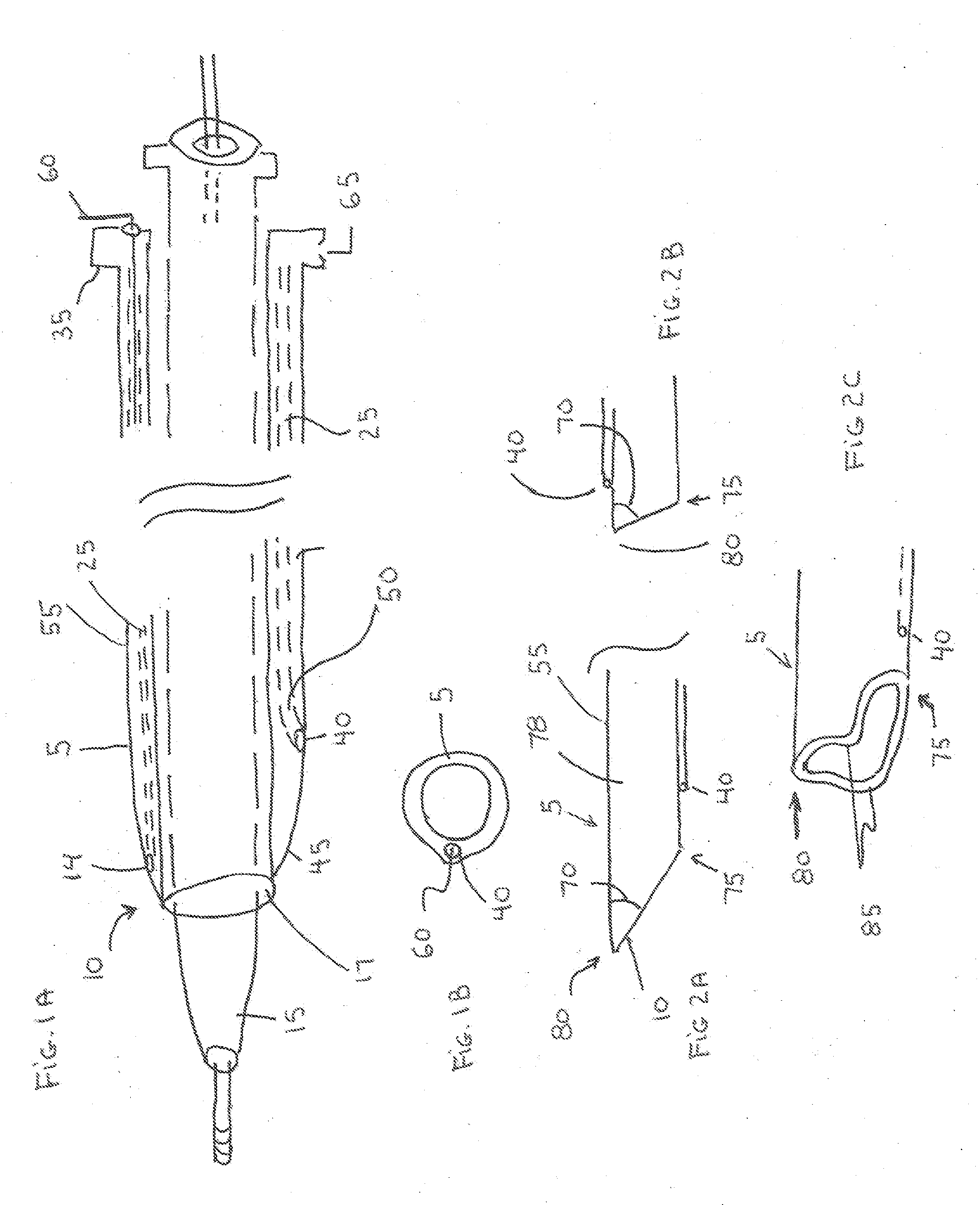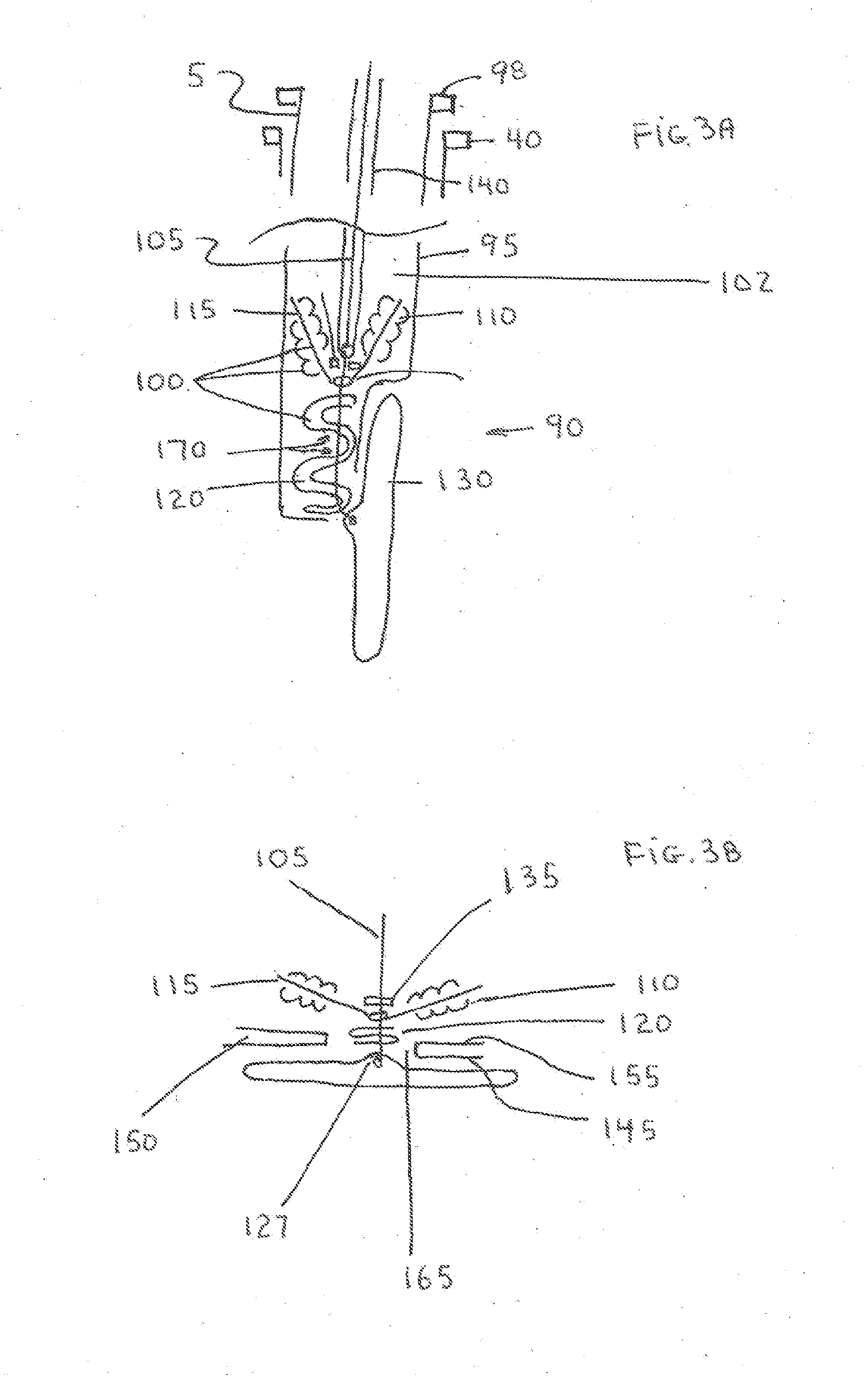Large Vessel Closure Sheath
a technology of a large vessel and a sheath, which is applied in the field of large vessel closure sheaths, can solve the problems of significant potential for embolization of the plug into the blood vessel, difficult to use existing vascular closure devices consistently, and inability to tolerate large access site openings, etc., and achieves the effects of enhancing the hemostatic seal, reducing the ability of the plug material, and fewer steps
- Summary
- Abstract
- Description
- Claims
- Application Information
AI Technical Summary
Benefits of technology
Problems solved by technology
Method used
Image
Examples
Embodiment Construction
[0067]The present invention is a vascular closure system particularly well suited for closure of large diameter vascular access site openings such as those created during the delivery of interventional devices such as the TAVI device or abdominal aortic aneurysm (AAA) devices. The introducer sheath typically used for these procedures can range from 16 French to over 20 French. A variety of vascular closure devices are currently used for closure of small access site openings such as the 6 French openings typically formed in the femoral artery of the leg for coronary therapeutic procedures. These devices do not work consistently for closure of large access site openings. One device that has not been successful for use in closure of large access site openings has an anchor (130) located within the blood vessel lumen that is attached to a plug (100) located on the outside of the blood vessel. One problem with this current system when used for large access site closure is associated with...
PUM
 Login to View More
Login to View More Abstract
Description
Claims
Application Information
 Login to View More
Login to View More - R&D
- Intellectual Property
- Life Sciences
- Materials
- Tech Scout
- Unparalleled Data Quality
- Higher Quality Content
- 60% Fewer Hallucinations
Browse by: Latest US Patents, China's latest patents, Technical Efficacy Thesaurus, Application Domain, Technology Topic, Popular Technical Reports.
© 2025 PatSnap. All rights reserved.Legal|Privacy policy|Modern Slavery Act Transparency Statement|Sitemap|About US| Contact US: help@patsnap.com



